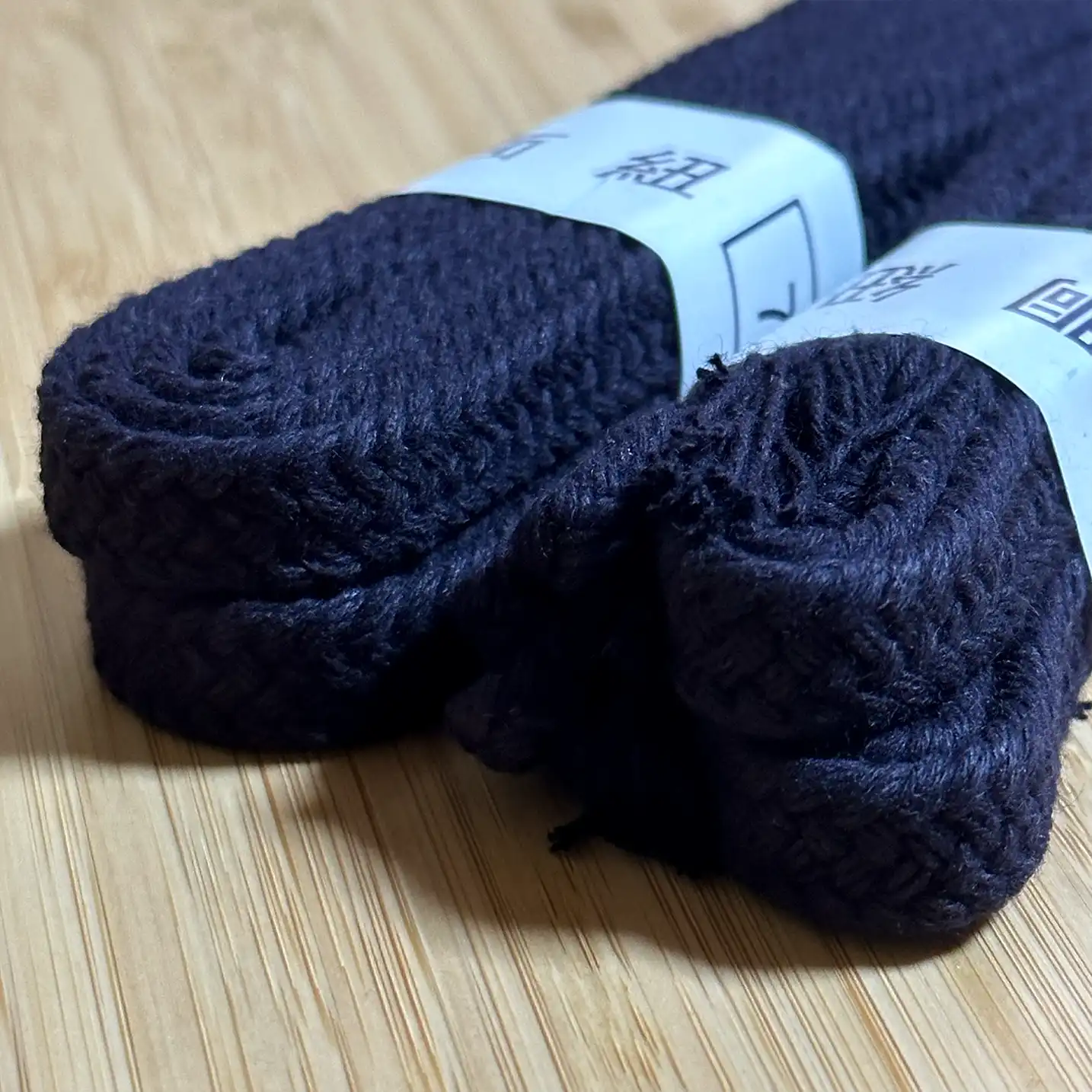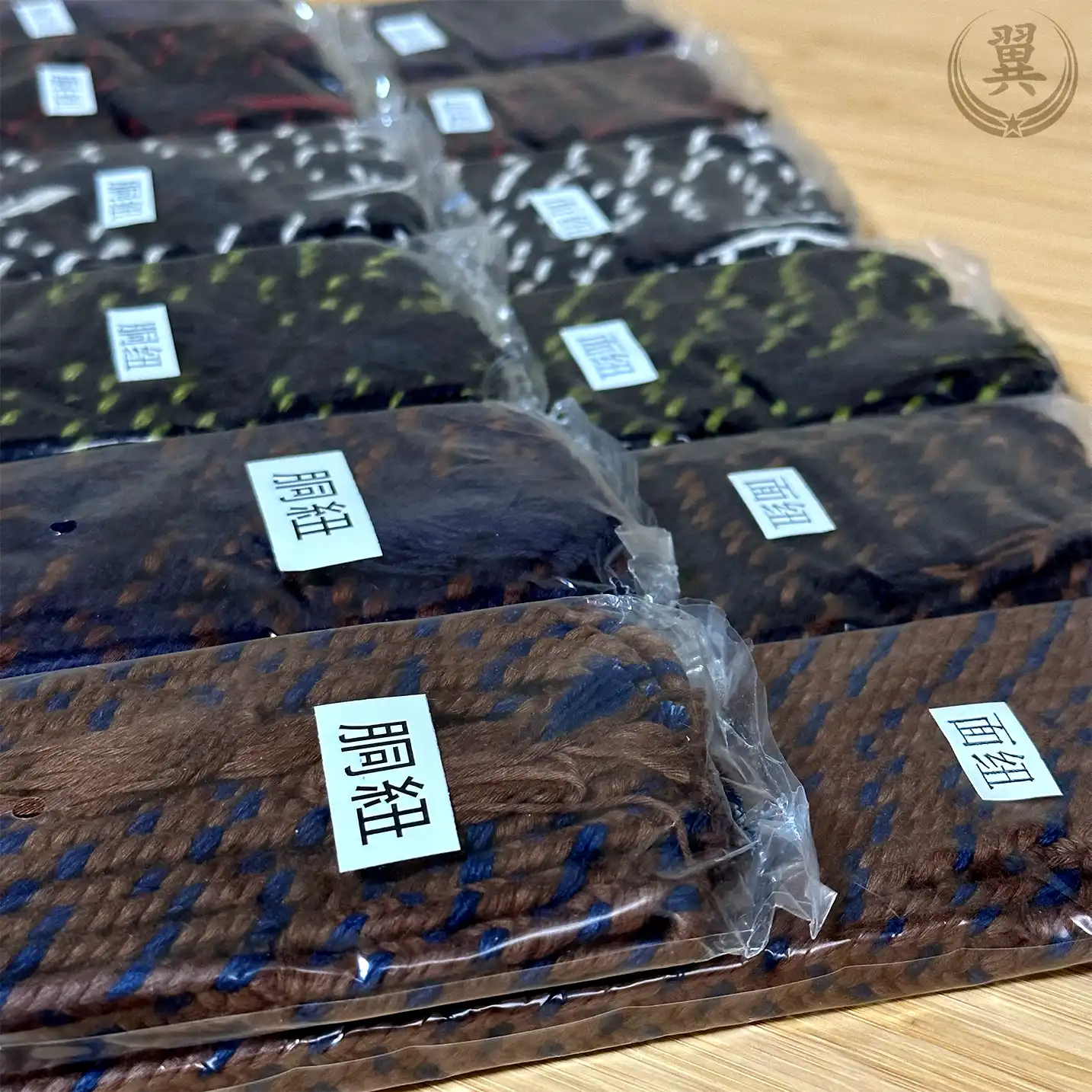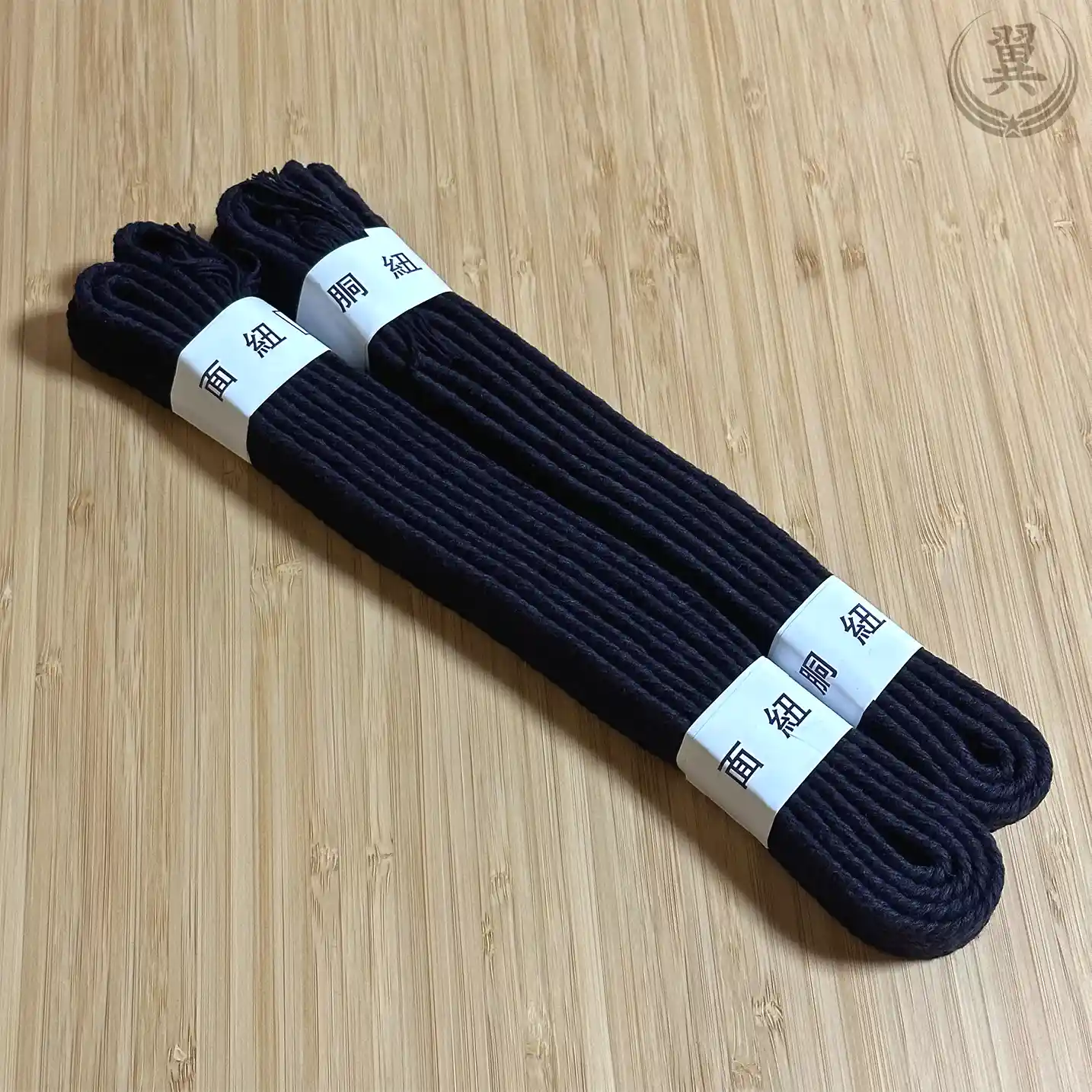Posted by 翼武道具 on 9th Sep 2023
Grades of Himo? Why do they have different prices?

* Short answer: Higher price = Better quality
However, there are some differences and also recommendations about when to use each type of Himo, so let's divide them by grades to understand them properly:
- Nami: "The cheapest Himo". As you can imagine, is not dyed with real Aizome (just navy color), therefore no leaking of color (good if you don't want Aizome stain). They are very flexible but not so durable, and they fade into a purple-ish color (with the concentration of sweat after use, and by long exposure to direct sunlight).
- Jousei: "The superior quality or luxury Himo". Actually it is not so premium as its name implies. Basically it is a thicker version of the Nami Himo, with Aizome, less affordable than the Nami of course, but close to the next grade in terms of price, not quality! which is why we do not recommend it so much (if you want something cheap: Nami. If you are looking for more durability; look for the next grades!).
- Ume: "Thick Himo, medium grade". As an Aizome affordable option this would be recommended instead of the Jousei Himo because it is thick but flexible (easy to tie), with medium durability (we consider this to be the standard grade Himo for training).
- Take: "Hard Himo, good quality". A great option for those who wants a durable Aizome Himo, without being too rigid or too expensive as the next grade.
- Matsu: "The highest grade Himo". Thick and hard Aizome Himo. It has the best durability compared with the other ones, but it also has a weak point, which is not necessarily its very high price: its rigidity makes tying it difficult and with the Aizome gets a little slippery tending to become loose easily.

Which should I choose?
Suggestions:
- Nami: Good as a spare Himo, or for small kids and beginners.
- Jousei: For beginners and kids that want to experience Aizome.
- Ume: Recommended as a standard thick Aizome Himo for normal practices, for average level.
- Take: This is probably the Himo you would like to use if you are an advance practitioner; Durability without compromising too much its flexibility.
- Matsu: When you need to look as sharp as possibly; for Dan examination for example. And also good when you practice too much in humid weather conditions and you have experienced already many Men/Do Himo worn down. We suggest to wash it previous the first use: Leave them submerged in cold water mixed with some white vinegar during one night and that would do the trick (otherwise it would be really difficult to tie!).

* Every Himo is made with a certain number of threads: Higher count means higher durability (but also thickness and hardness).
* White (or color Himo) also can be divided by grade. You will usually find Nami and Ume types though.
* Some Aizome Himo are sold pre-washed (so you can use them immediately after the purchase!).
* To make them more flexible and increase their lifespan we suggest to clean the concentrated sweat absorbed by the Himo (they are basically cotton sponges!) once in a while; depending how much you practice and the weather conditions.
You can check out our Himo section here!
TSUBASA BUDOGU
